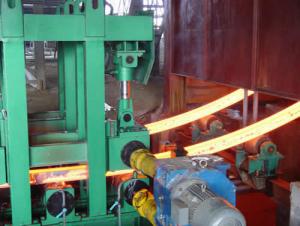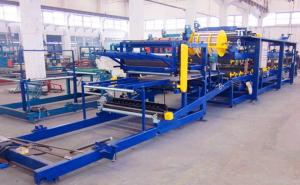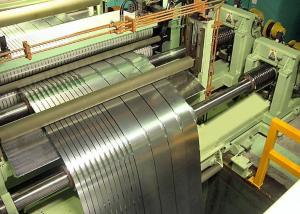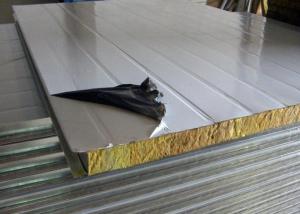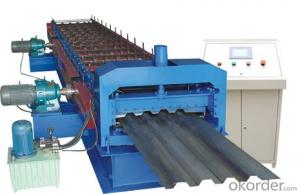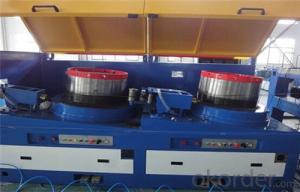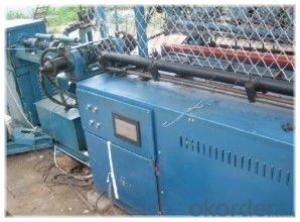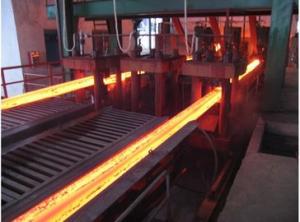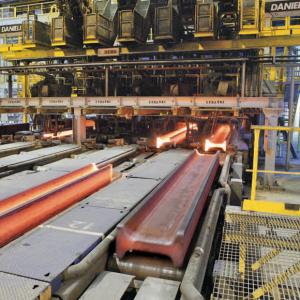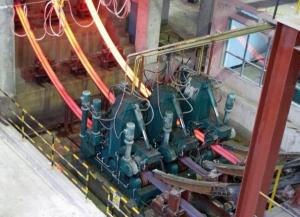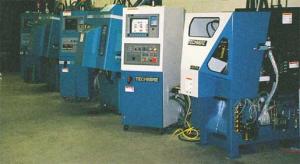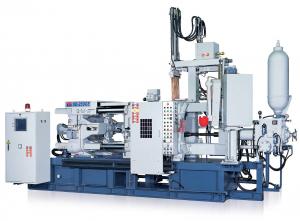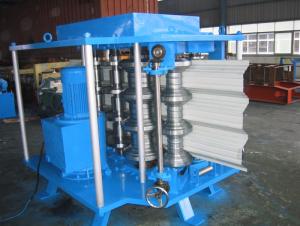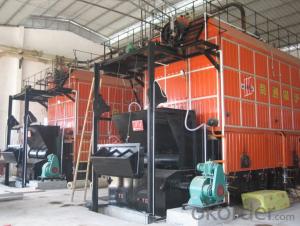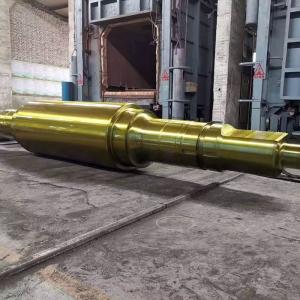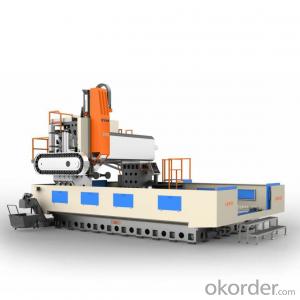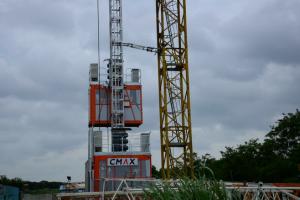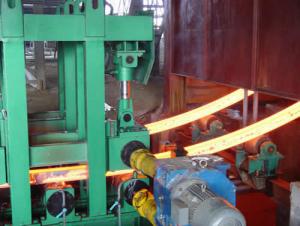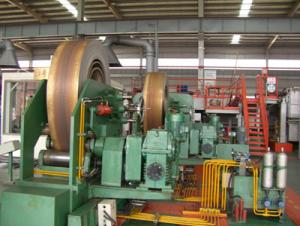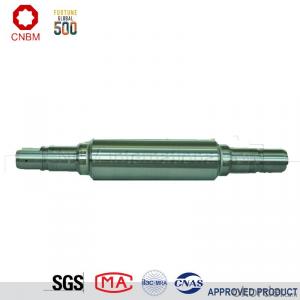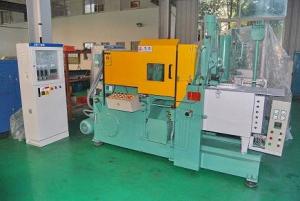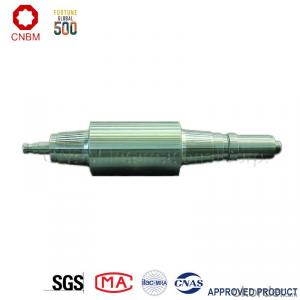Continuous Casting Machine
- Loading Port:
- China Main Port
- Payment Terms:
- TT or LC
- Min Order Qty:
- 1 Set set
- Supply Capability:
- 30 Sets Per Year set/month
OKorder Service Pledge
Quality Product, Order Online Tracking, Timely Delivery
OKorder Financial Service
Credit Rating, Credit Services, Credit Purchasing
You Might Also Like
Technology process:
1.Heat the EVA film
2.Cover the heated EVA film on the mould(can be made from wood or aluminum)
3.Spray a coating in a certain baume degree
4.Put on the empty blask
5.Sand-up the flask and vibrate to compaction
Packaging & Delivery
Packaging Details:containers
Delivery Detail:Complete one set of equipment needs for three months
- Q:What are the different types of packaging and shipping methods used for castings produced by metal casting machinery?
- There are several types of packaging and shipping methods used for castings produced by metal casting machinery. Some common packaging methods include wooden crates, corrugated boxes, and pallets. These provide protection and ensure safe transportation of the castings. As for shipping methods, options such as air freight, sea freight, and land transportation are commonly used depending on the distance and urgency of delivery. Each method has its own advantages and considerations, such as cost, speed, and handling requirements. Ultimately, the choice of packaging and shipping method depends on the specific requirements and preferences of the customer and the casting manufacturer.
- Q:What are the different types of gating systems used with metal casting machinery?
- Various gating systems are utilized with metal casting machinery to optimize the flow of molten metal into the mold cavity, with each system designed for a specific purpose. These gating systems are vital in guaranteeing the quality and integrity of the final castings. 1. The sprue and runner system is the conventional and widely used gating system in metal casting. It comprises a single sprue, a vertical channel connecting the pouring basin to the mold cavity, and one or multiple runners, which distribute the molten metal from the sprue to the individual mold cavities. This system is straightforward yet effective for numerous casting applications. 2. The ingate system allows for the direct introduction of molten metal into the mold cavity through one or multiple ingates. These ingates, attached to the mold, facilitate a controlled flow of metal, reducing turbulence and minimizing potential defects. This system is commonly employed for intricate castings or when a specific flow pattern is required. 3. The bottom gating system involves pouring the molten metal into the mold cavity from the bottom. It utilizes a gate situated at the mold's bottom, enabling the metal to fill the cavity from bottom to top. This method minimizes the risk of air entrapment and provides a consistent and controlled flow of metal. It is often utilized for thin-walled or complex castings. 4. The vacuum-assisted gating system employs vacuum pressure to enhance the flow of molten metal into the mold cavity. It typically incorporates a vacuum chamber connected to the gating system, aiding in the removal of air and gases from the mold cavity during the casting process. This system enhances casting quality by reducing porosity and improving surface finish. 5. The expendable pattern gating system involves the use of patterns or cores made of materials like wax or foam to create the gating system. These patterns are melted or burned out during the casting process, leaving behind the desired gating configuration in the mold. The advantage of this system is its ability to accommodate complex and intricate gating designs that are not achievable with traditional gating systems. 6. The pressurized gating system employs pressure to forcefully propel the molten metal into the mold cavity. It typically incorporates a pressurized chamber connected to the gating system, exerting pressure on the metal and ensuring a consistent flow. This system is commonly utilized for high-pressure die casting processes, where achieving a rapid and uniform mold cavity fill is essential. In summary, the selection of a gating system depends on various factors, including the casting geometry, material being cast, desired quality, and production requirements. Each gating system has its own advantages and limitations, necessitating the appropriate selection for each casting application to achieve optimal results.
- Q:What are the limitations of metal casting machinery in terms of shape and complexity?
- The casting process in metal machinery has certain limitations regarding shape and complexity. One major limitation is the difficulty in achieving intricate and complex shapes. Typically, metal machinery relies on rigid molds made of materials like sand, ceramic, or metal to shape the final metal product. However, the use of molds restricts the ability to create detailed and complex geometries. Molds have limitations in terms of angle sharpness, cavity depth, and fine feature precision. This is because the molten metal needs to flow into the mold and solidify properly, and complex shapes can hinder this process. Another limitation is the presence of undercuts or internal cavities. Undercuts are areas in the design where the mold shape makes it difficult to remove the solidified metal product. These undercuts can make it challenging to extract the final product from the mold without causing damage. Similarly, creating and removing internal cavities from the mold can be problematic without compromising the product's structural integrity. Moreover, metal machinery may struggle with producing thin or fragile parts. The molten metal requires sufficient thickness to ensure structural integrity and prevent deformation during casting. Thin or delicate features may not withstand the high temperatures and pressures involved, leading to distortion or breakage. Lastly, the size of metal machinery itself can limit the size of the final product. The mold size and casting equipment capacity impose restrictions on the maximum dimensions of the castings. Large and complex shapes may require specialized equipment or alternative manufacturing processes. Overall, while metal machinery is widely used and effective, it does have limitations in shape and complexity. However, technological advancements and process optimization have allowed for improvements in achieving more intricate designs and complex geometries in metal casting.
- Q:What is the cooling process in metal casting machinery?
- The production of cast metal components relies heavily on the crucial step of cooling in metal casting machinery. Once the molten metal is poured into the mold cavity, it must solidify and cool down to acquire the desired shape and structure. To achieve this, the cooling process entails extracting heat from the molten metal, allowing it to solidify and conform to the mold's shape. This is typically accomplished through various cooling mechanisms, including water, air, or specialized cooling mediums. Water cooling stands as one of the most commonly employed methods in metal casting machinery. It involves the circulation of cold water through channels or jackets within the mold or directly onto the casting itself. This approach significantly reduces the temperature of the molten metal, facilitating rapid solidification. Water cooling proves highly effective and efficient, particularly in large-scale production. Alternatively, air cooling serves as another method used in metal casting machinery, especially for smaller or less intricate components. It entails exposing the molten metal to ambient air, allowing natural convection to disperse heat and aid solidification. Although air cooling may take longer compared to water cooling, its simplicity and cost-effectiveness make it widely utilized. In certain instances, specialized cooling mediums may come into play in metal casting machinery. These can include cooling oils, gases, or even liquid nitrogen. The selection of these mediums depends on the desired cooling rate and the specific properties of the metal being cast. In summary, the cooling process within metal casting machinery plays a vital role in attaining the desired quality and properties of cast metal components. It ensures correct solidification of the molten metal, minimizes defects, and guarantees dimensional accuracy. Utilizing proper cooling techniques is crucial for achieving high-quality castings while maintaining the efficiency and productivity of metal casting machinery.
- Q:How can metal casting machinery contribute to waste reduction and recycling?
- Metal casting machinery can contribute to waste reduction and recycling in several ways. Firstly, it enables the efficient use of raw materials by melting and reusing scrap metal, minimizing the need for new metal extraction. This reduces the amount of waste generated in the production process. Additionally, metal casting machinery allows for the creation of intricate and complex shapes, reducing material waste compared to other manufacturing methods. Furthermore, it facilitates the recycling of metal components and products at the end of their lifecycle. By melting down and reusing these materials, metal casting machinery promotes a circular economy, minimizing waste and conserving resources.
- Q:What are the different automation options available for metal casting machinery?
- There are several automation options available for metal casting machinery, each designed to streamline and enhance the casting process. One of the most common automation options is robotic arm technology. Robotic arms can be programmed to perform various tasks, such as pouring molten metal into molds, removing finished castings, and even cleaning and finishing the castings. These robotic arms are equipped with sensors and cameras to ensure accurate and precise movements, improving both speed and quality in the casting process. Another automation option is the use of computer numerical control (CNC) machines. CNC machines are computer-controlled machines that can perform tasks such as milling, drilling, and cutting metal with high precision. By automating these processes, CNC machines can produce complex and intricate castings with minimal human intervention, reducing the risk of errors and increasing production efficiency. Integrated automation systems are another option available for metal casting machinery. These systems combine various automation technologies, such as robotics, CNC machines, and material handling systems, to create a fully automated casting line. These systems can be programmed to perform the entire casting process, from mold preparation and pouring to finishing and inspection, eliminating the need for manual labor and reducing the risk of human error. Furthermore, there are automation options for specific tasks within the casting process. For instance, there are automated pouring systems that use sensors and control systems to accurately pour molten metal into molds. There are also automated mold handling systems that can transport, position, and assemble molds automatically, improving efficiency and reducing the risk of injuries. Overall, the different automation options available for metal casting machinery are aimed at improving efficiency, accuracy, and productivity in the casting process. By implementing these automation technologies, manufacturers can enhance their production capabilities, reduce costs, and deliver high-quality castings to their customers.
- Q:What are the different types of energy-saving technologies used in metal casting machinery?
- There are several different types of energy-saving technologies that are commonly used in metal casting machinery. Firstly, one common technology is the use of energy-efficient motors. These motors are designed to consume less electricity while still providing the necessary power for the casting process. By using these motors, the machinery can reduce its overall energy consumption and save on electricity costs. Another technology that is often employed is the implementation of variable frequency drives (VFDs). VFDs allow for precise control of motor speed, resulting in reduced energy consumption. By adjusting the motor speed to match the specific requirements of the casting process, energy waste can be minimized. Heat recovery systems are also frequently utilized in metal casting machinery. These systems capture waste heat generated during the casting process and repurpose it for other applications, such as preheating raw materials or heating the facility. By maximizing the utilization of heat, energy is conserved and the overall efficiency of the machinery is improved. In addition, advanced control systems and automation technologies can contribute to energy savings. These systems enable operators to monitor and optimize energy usage in real-time, making adjustments as needed to minimize waste. By utilizing data-driven insights and automation, the machinery can operate at maximum efficiency, reducing energy consumption. Furthermore, the adoption of energy-efficient lighting solutions, such as LED lights, can also contribute to energy savings in metal casting machinery. These lights consume significantly less energy compared to traditional lighting options, resulting in reduced electricity usage and lower operating costs. Overall, by incorporating these various energy-saving technologies, metal casting machinery can significantly reduce its energy consumption, resulting in cost savings and a more sustainable manufacturing process.
- Q:How is the casting inspected for chemical composition in metal casting machinery?
- The casting is inspected for chemical composition in metal casting machinery through various methods such as spectroscopy, X-ray fluorescence (XRF), and optical emission spectrometry (OES). These techniques allow for the accurate analysis of the metal's elemental composition, ensuring that it meets the desired specifications and quality standards.
- Q:What are the different types of regulations and standards governing the use of metal casting machinery?
- There are several regulations and standards that govern the use of metal casting machinery. These include occupational safety and health regulations, machine guarding standards, electrical safety standards, environmental regulations, and quality control standards. These regulations and standards ensure the safety of workers, prevent accidents, protect the environment, and ensure high-quality production in the metal casting industry.
- Q:How is the final product removed from the mold in metal casting machinery?
- In metal casting machinery, the final product is typically removed from the mold through a process known as mold release. Mold release involves separating the mold and the casted metal in order to safely extract the final product. There are several methods used to accomplish this, depending on the specific type of metal casting machinery and the complexity of the mold. One common method is to use a release agent, such as a lubricant or a spray, which is applied to the mold surface prior to pouring the molten metal. This release agent creates a barrier between the mold and the metal, preventing them from sticking together. Once the metal has solidified and cooled, the mold can then be opened, and the final product can be easily removed. Another method is known as mechanical demolding. This involves using mechanical force to separate the mold and the casted metal. For simpler molds, this can be as simple as manually pulling or prying apart the mold halves. However, for more complex molds, specialized demolding equipment may be used, such as hydraulic or pneumatic systems, which exert controlled force to disassemble the mold and release the final product. In some cases, molds may be designed with movable sections or cores that can be retracted or ejected to facilitate the removal of the final product. These movable sections can be operated manually or automatically, depending on the machinery and the complexity of the casting. Overall, the method used to remove the final product from the mold in metal casting machinery depends on various factors such as the type of mold, the complexity of the product being casted, and the specific capabilities of the machinery being used. The goal is to ensure that the final product is safely and effectively extracted from the mold while minimizing damage or distortion.
Our professions include metallurgical technology, equipment and automation. We can provide the best solutions to the production process, design & manufacture of equipment and electrical automation regarding various industries in domestic and foreign districts with exquisite technology and fine quality service. We can provide all-around services to customers from development & design to the provision, installation and running of products.Strong technical strength, advanced equipment manufacturing technology, fine quality professional talents, and perfect service systems all bring about reliability, relaxation, convenience and delight to the cooperation with customers from beginning to end.
1. Manufacturer Overview |
|
|---|---|
| Location | Jiangsu,China (Mainland) |
| Year Established | 2000 |
| Annual Output Value | |
| Main Markets | South America Eastern Europe Southeast Asia Africa Mid East South Asia Domestic Market |
| Company Certifications | |
2. Manufacturer Certificates |
|
|---|---|
| a) Certification Name | |
| Range | |
| Reference | |
| Validity Period | |
3. Manufacturer Capability |
|
|---|---|
| a)Trade Capacity | |
| Nearest Port | SHANGHAI |
| Export Percentage | 21% - 30% |
| No.of Employees in Trade Department | 3-5 People |
| Language Spoken: | English, Chinese |
| b)Factory Information | |
| Factory Size: | |
| No. of Production Lines | |
| Contract Manufacturing | |
| Product Price Range | |
Send your message to us
Continuous Casting Machine
- Loading Port:
- China Main Port
- Payment Terms:
- TT or LC
- Min Order Qty:
- 1 Set set
- Supply Capability:
- 30 Sets Per Year set/month
OKorder Service Pledge
Quality Product, Order Online Tracking, Timely Delivery
OKorder Financial Service
Credit Rating, Credit Services, Credit Purchasing
Similar products
New products
Hot products
Hot Searches
